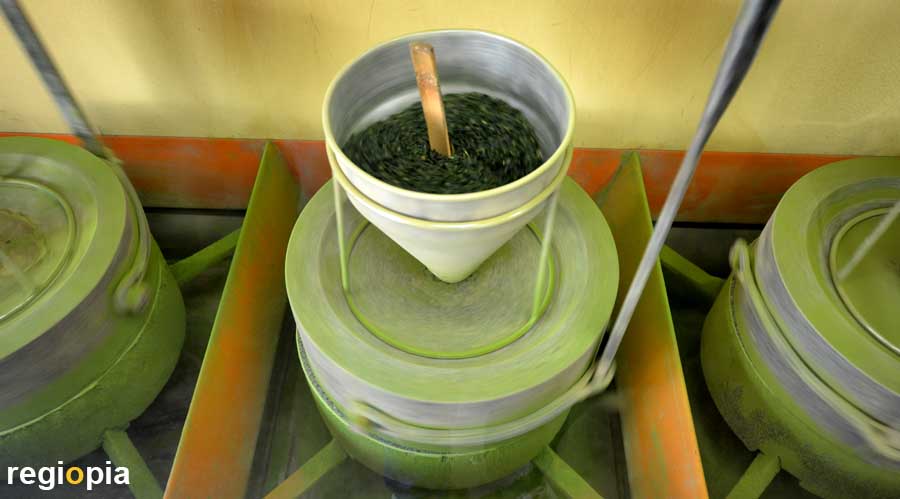
Matcha Tea
The suburb of Uji is around 12 kilometers to the south of Kyoto Central Station. Uji is famous for the best matcha tea in the world. Taste is not a precise quantity to be determined, but matcha tea has been produced in Uji for centuries. The small town is known all over Japan for Matcha. On the main road leading to Byodo-in Temple, you will find almost exclusively tea shops. Green tea is grown in the Uji hinterland and was previously transported by ship on the Uji River. The tea was unloaded and processed in Uji. The tea leaves are removed from the stems, steamed, dried and finely ground. The japanese word Matcha means grounded tea.
In the tea shops you can see many small grinders that produce tea. The Matcha is a noble product that is sold at high prices. In Uji you can see many foods that have been refined with green tea. There is matcha ice cream, gyoza with matcha, matcha ramen and matcha sauces.
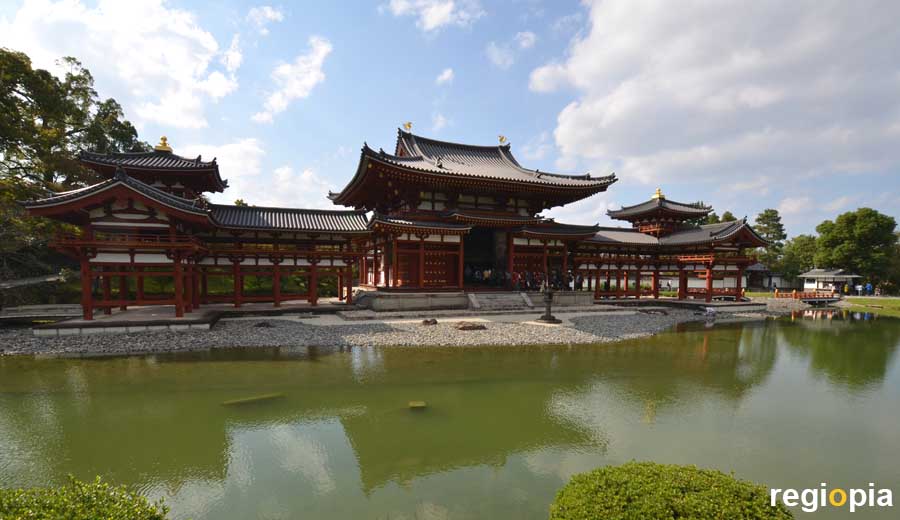
Byodo-in Temple
The most famous sight of Uji is the Byodo-in temple. The building is a UNESCO World Heritage Site of Kyoto. The building was originally built in 998 as a villa for Minister Michinaga. His son Yorimichi expanded the building and made it a Buddhist temple in 1052. The central Phoenix Hall (Ho-o-Do or Amida-do) was built in 1053. There is a phoenix (Ho) on the roof top and in the hall there is a picture of Amida Buddha. The country house of Yorimichi consisted of over 30 structures, but all of them were destroyed by fire in 1483, except the Phoenix Hall. Since then, it has been the oldest wooden structure in Kyoto.
The Phoenix Hall also went down in Japan's history because General Minamoto no Yorimasa committed Harakiri (Seppuku) in here, after the defeat at the First Battle of Uji in 1180. It was the first time that a samurai committed ritual suicide to avoid the shame of defeat.
The Byodo-in temple consists of three parts, the central hall and two side structures, which are connected by an open corridor. The beauty of the temple also includes the pond and the surrounding park. The pond saved the building from being destroyed by fire. The Byodo-in Temple is one of the most elegant buildings in Japan, due to its horizontal orientation and its lightness, the building seems to float.
The Byodo-in Temple is one of the most famous buildings in Japan, it adorns the 10,000 yen bill and the 10 yen coin.
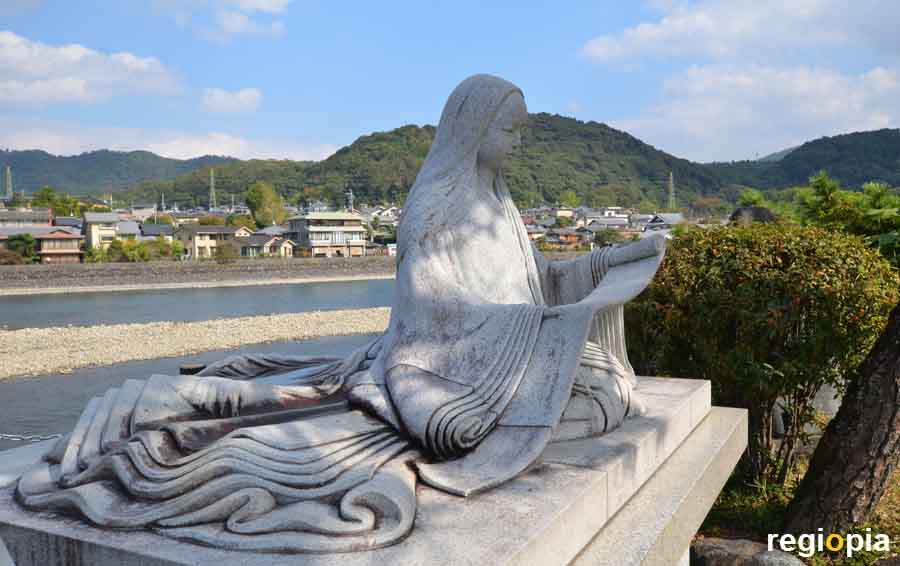
Murasaki Shikibu
A statue of a young woman sits at the Uji Bridge. It is Murasaki Shikibu, a lady of the Fujiwara family. She became famous as a poet and wrote the first novel in Japanese literature. Her work "Genji Monogatari" is the story of Prince Genji, who had many women but lived with Murasaki until she died and he lost his courage in grief. The end was either left intentionally open or is missing. The novel was written on scrolls, not all of which have survived. The author's name was not known, so she was named after the protagonist of her novel. The scrolls are keept at the Tokugawa Art Museum in Nagoya. Murasaki Shikibu probably lived in Kyoto between 990-1010.
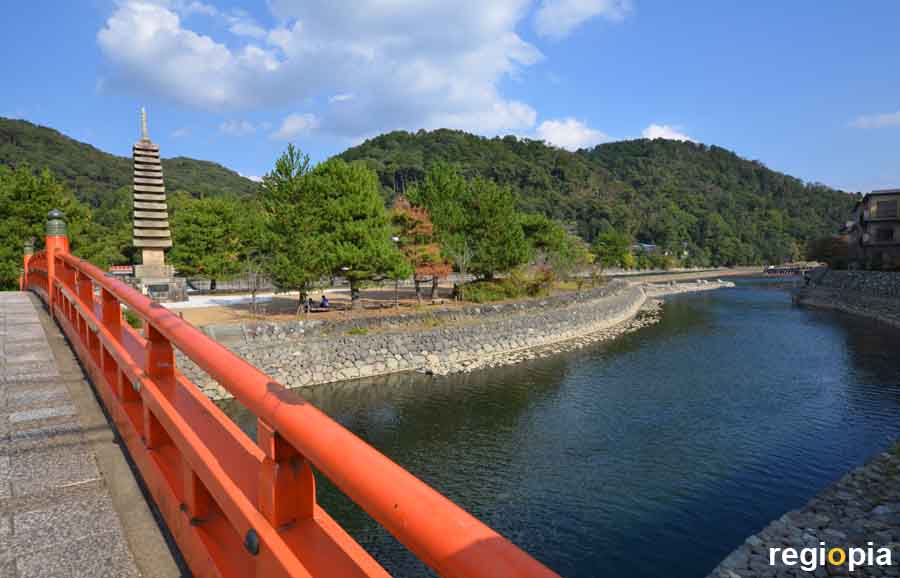
Uji Harbour
The port of Uji used to be an important transfer point for tea from the vicinity. Today there is a river promenade with some restaurants. The red Kisen Bridge leads to the islands in the Uji River. These are designed like a park, with small pagodas and sculptures. On the island you can also see cormorant fishermen "Ukai". From here you can see the forested slopes of the nearby mountains.
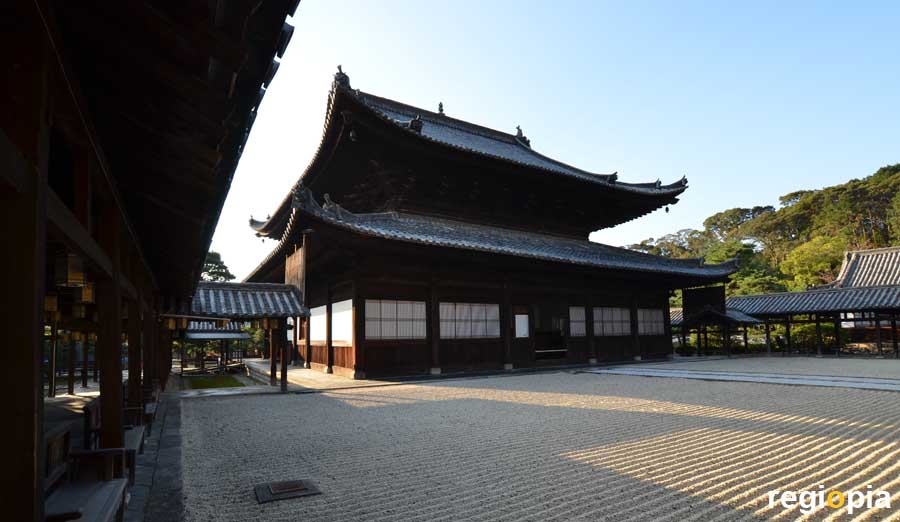
Manpuku-ji
The Manpuku-ji is the main temple of the Obaku-san school. The Buddhist temple has its origins in China and the name Manpuku-ji also refers to the main temple at Huang Bo Shan in Fujian province. Chinese monks came to Nagasaki around 1620 and founded the Fukusai-ji and Sofuku-ji of the Obaku school. Manpuku-ji in the Obaku district was founded in 1661. The Obaku school sought proximity to the emperor and therefore built its main temple near the capital Heian-kyo.
Manpuku-ji Temple is located near Obaku Railway Station, about 2.5 kilometers north of Uji. It is only around 250 m to walk from the train station to the entrance of the temple. The Manpuku-ji is a beautiful Chinese Ming-style temple complex. The Obaku-san school is a Zen Buddhist movement that developed from Chinese Chan Buddhism.
Unlike in Kyoto, where all temples are flooded with tourists, there is still peace and deceleration to be found at Manpuku-ji. When we visited the temple, we were the only visitors.
Map of Uji, Japan
ads
Travel Guide Uji
ads
ads


